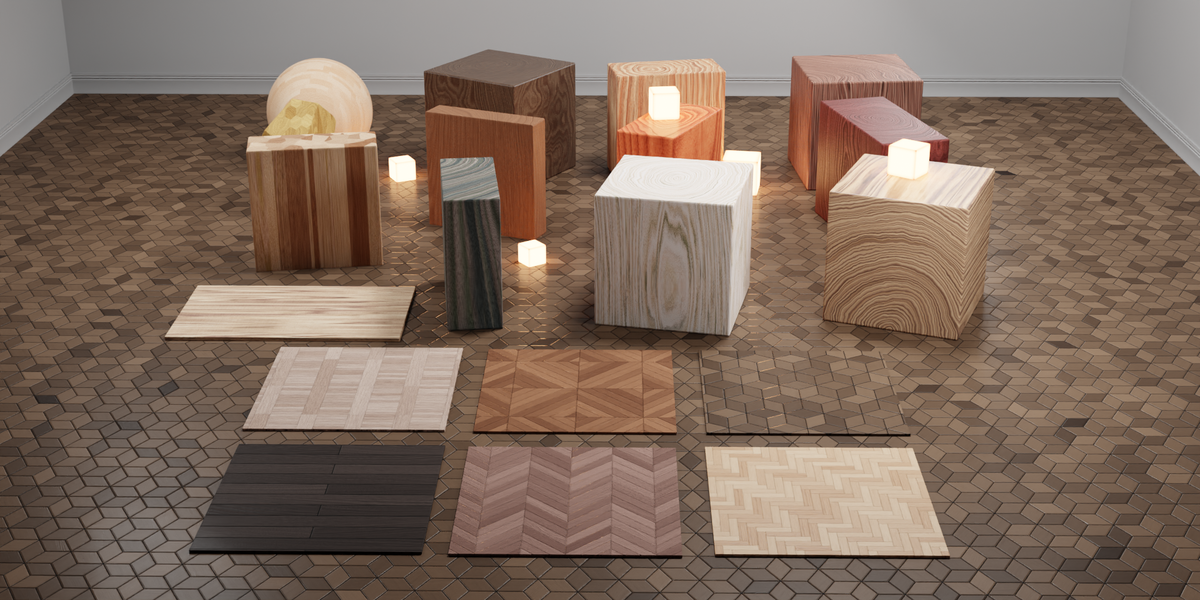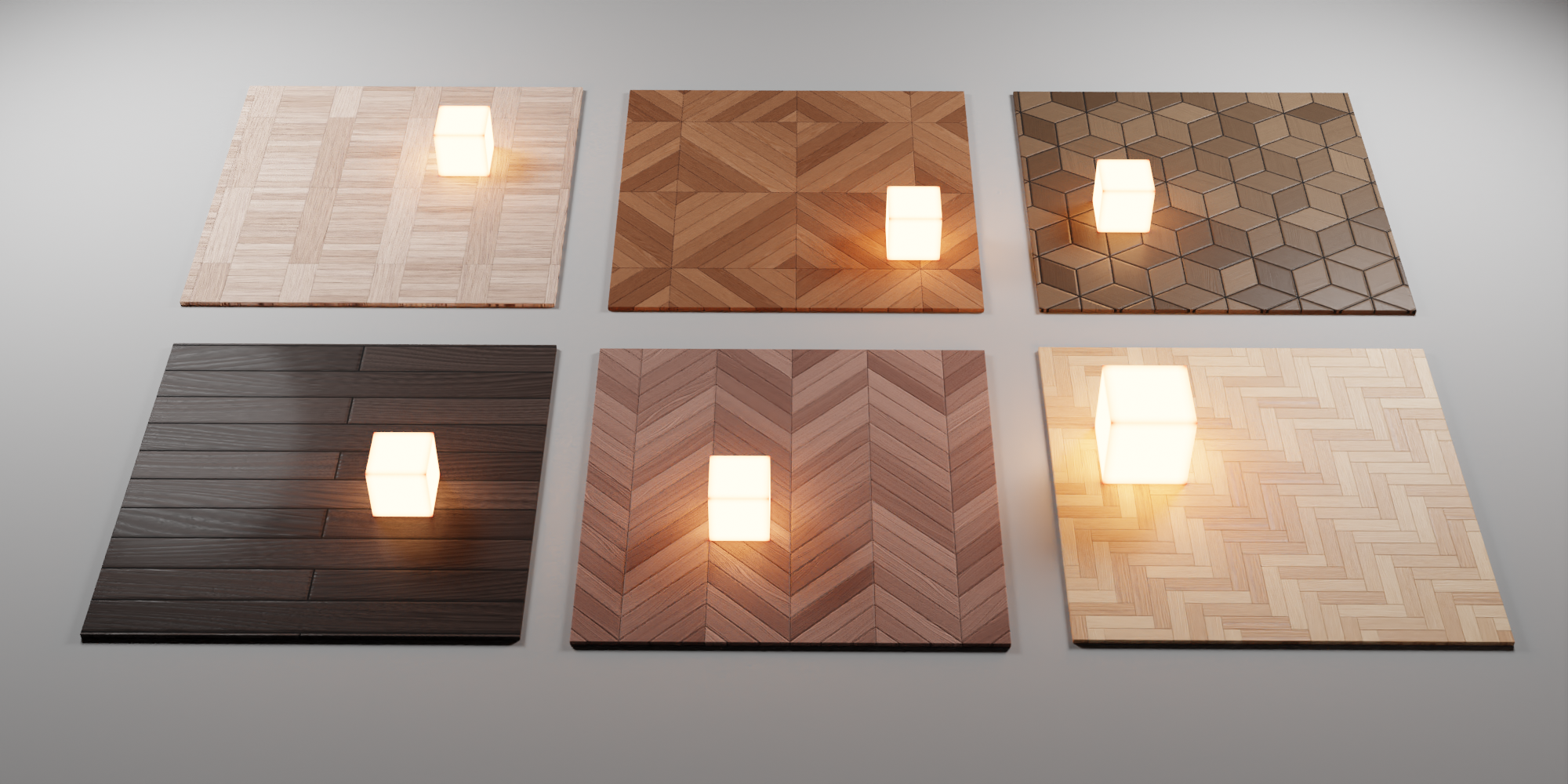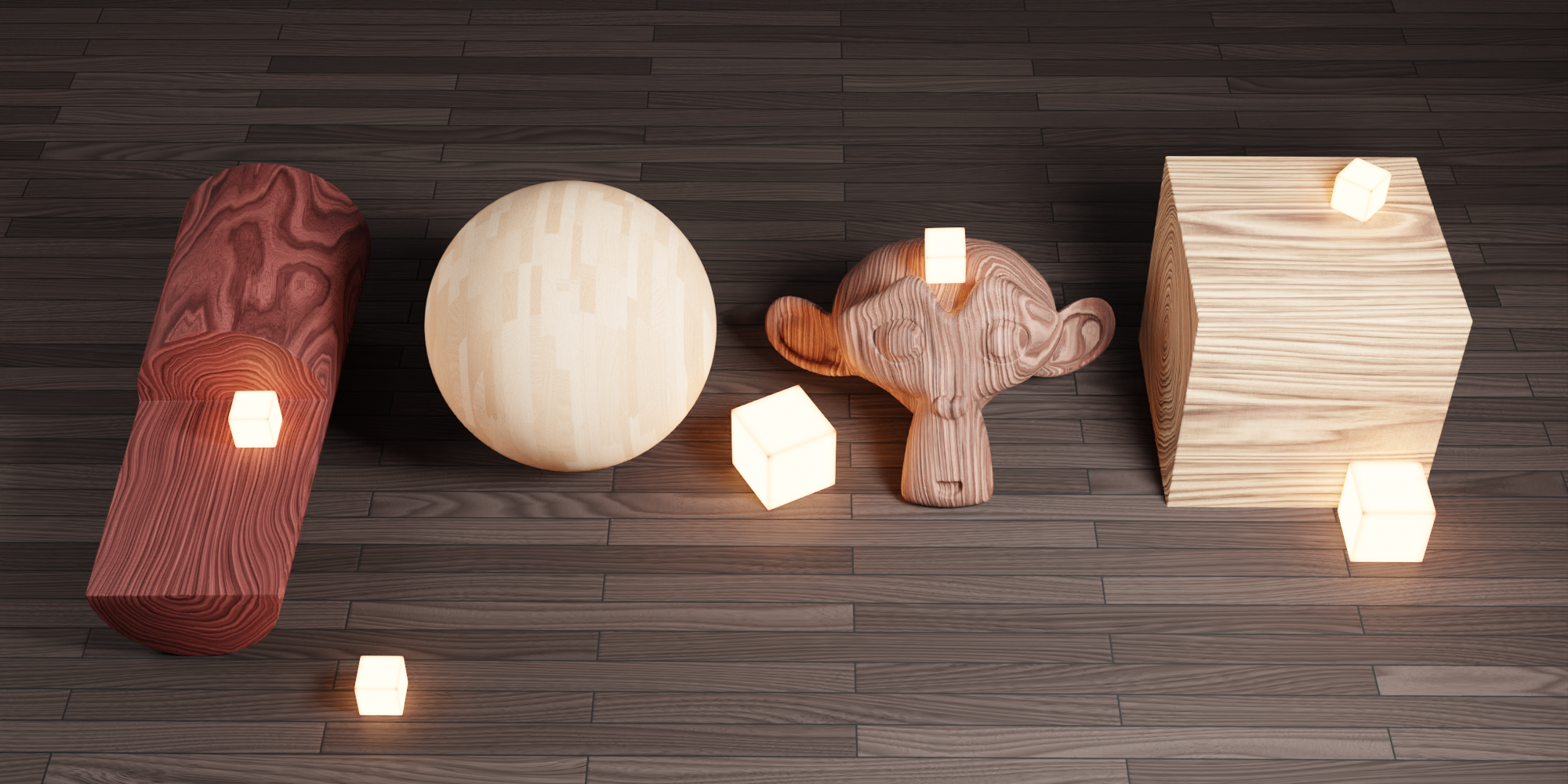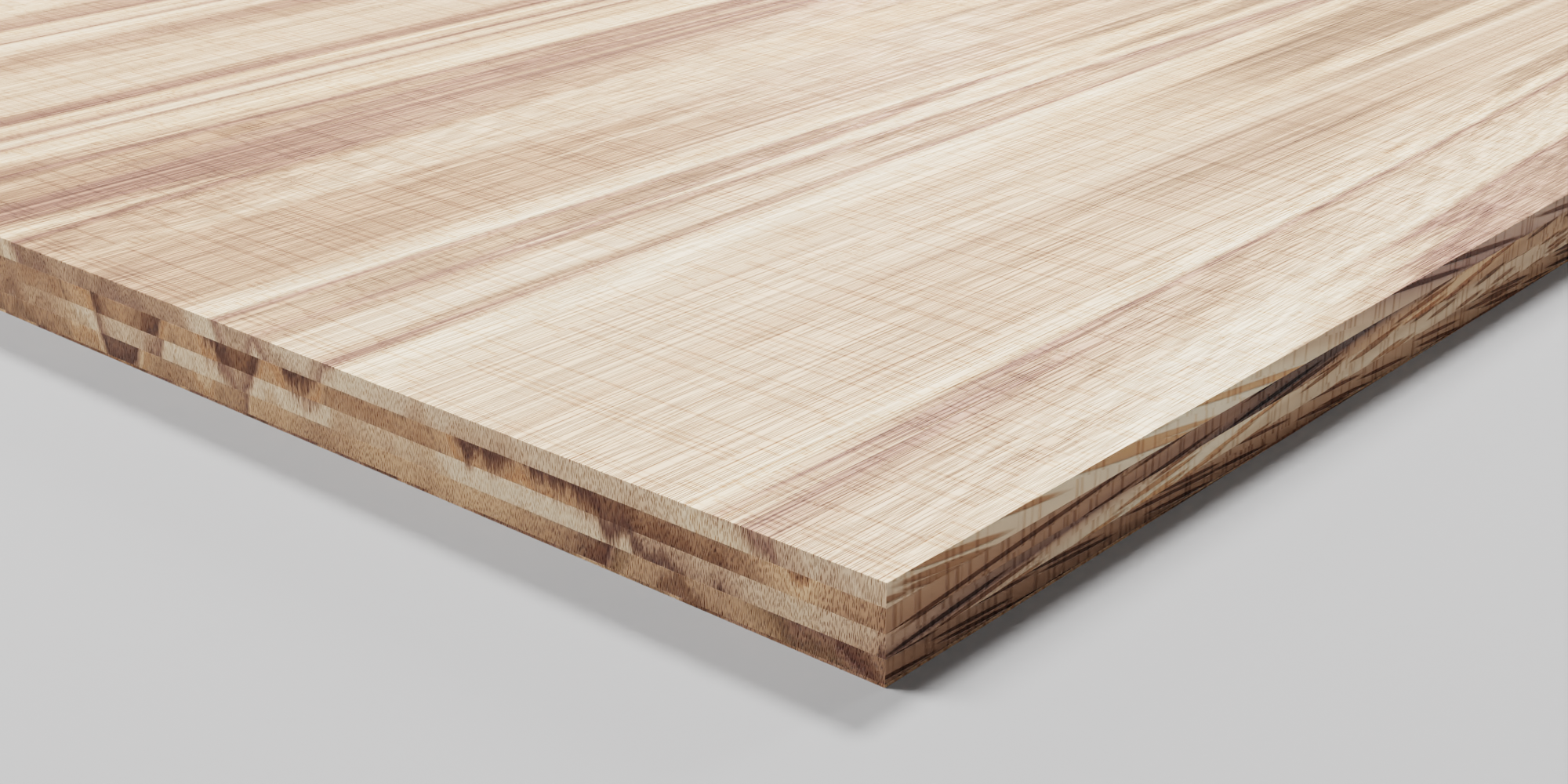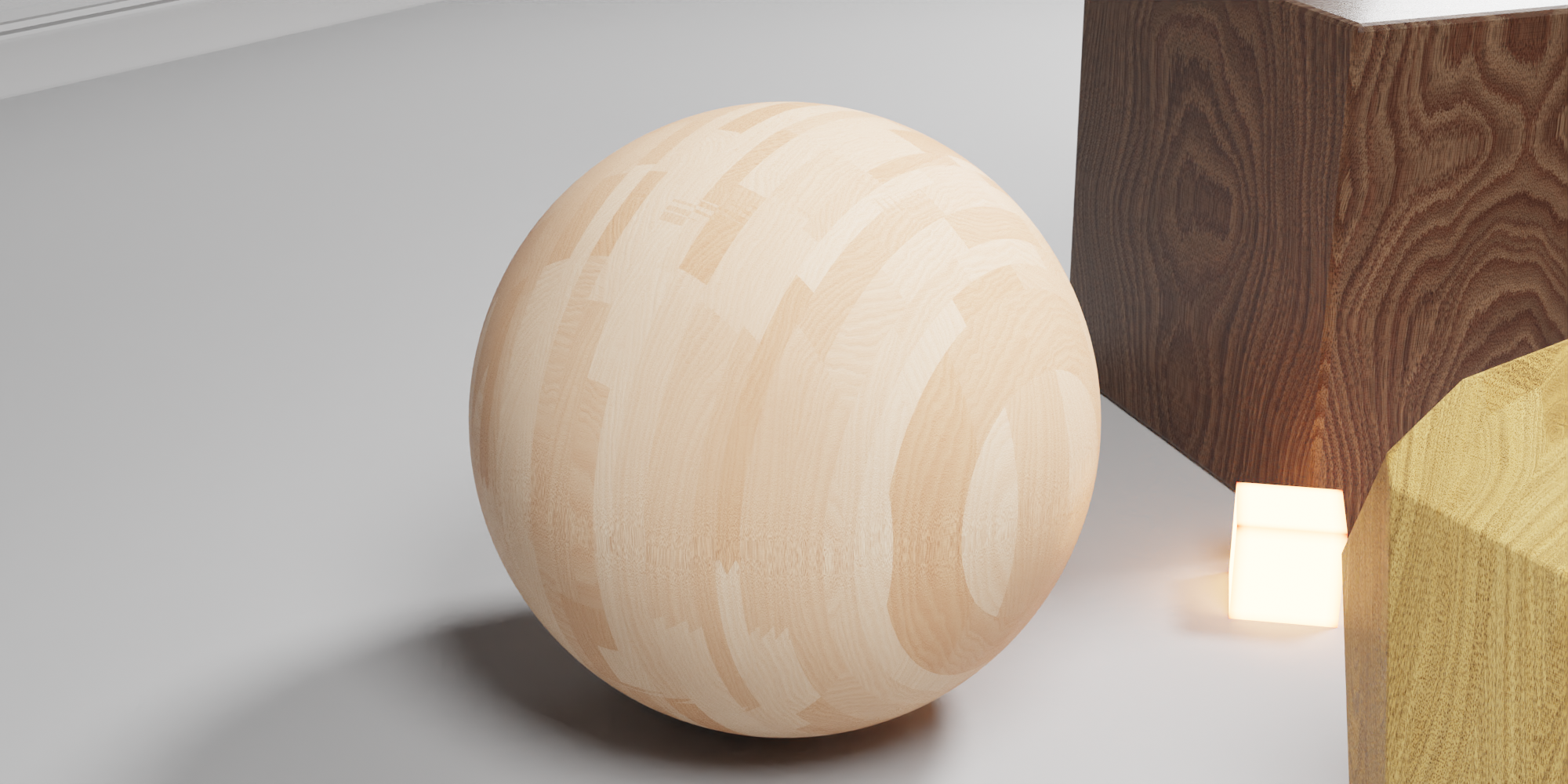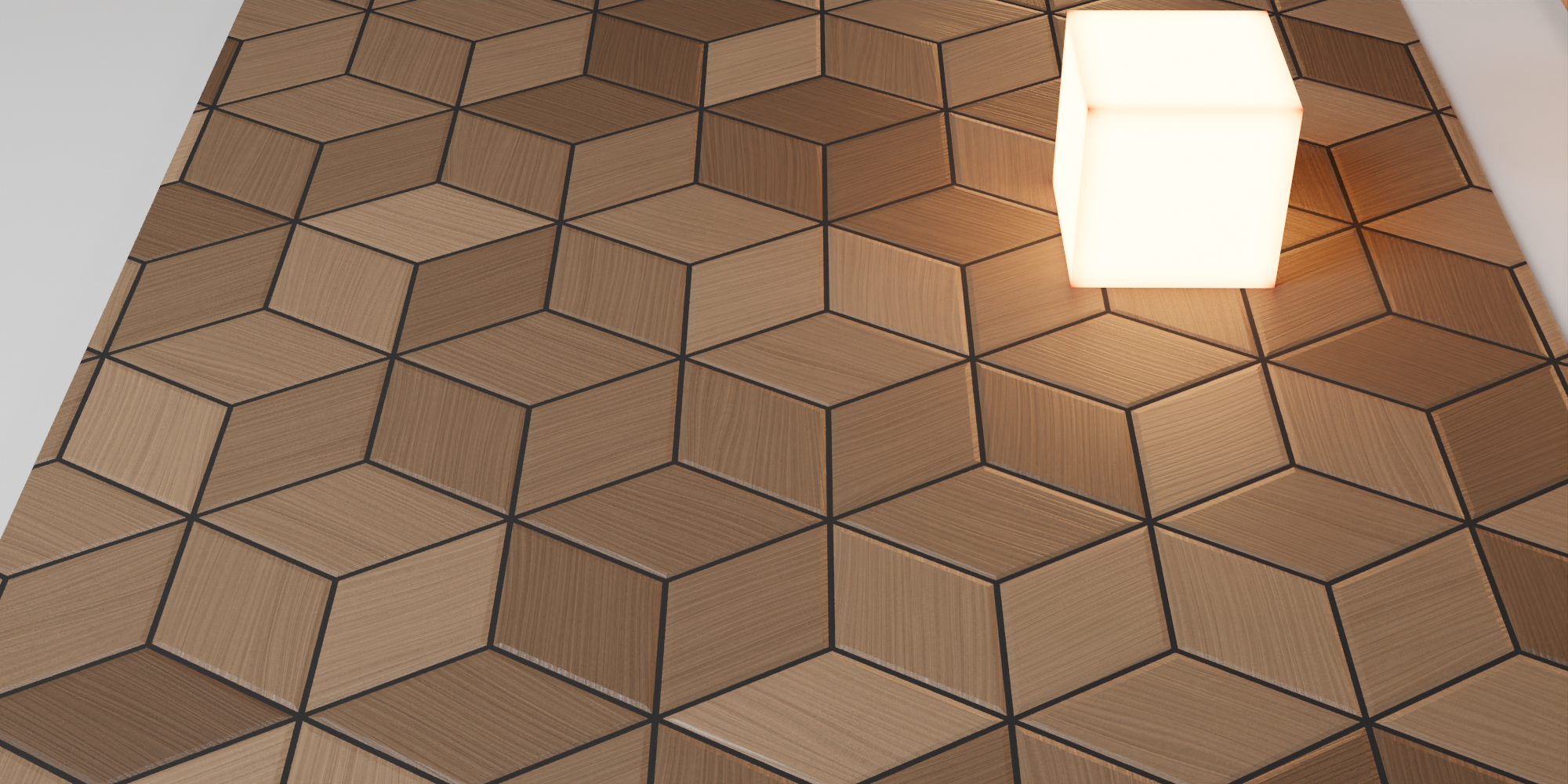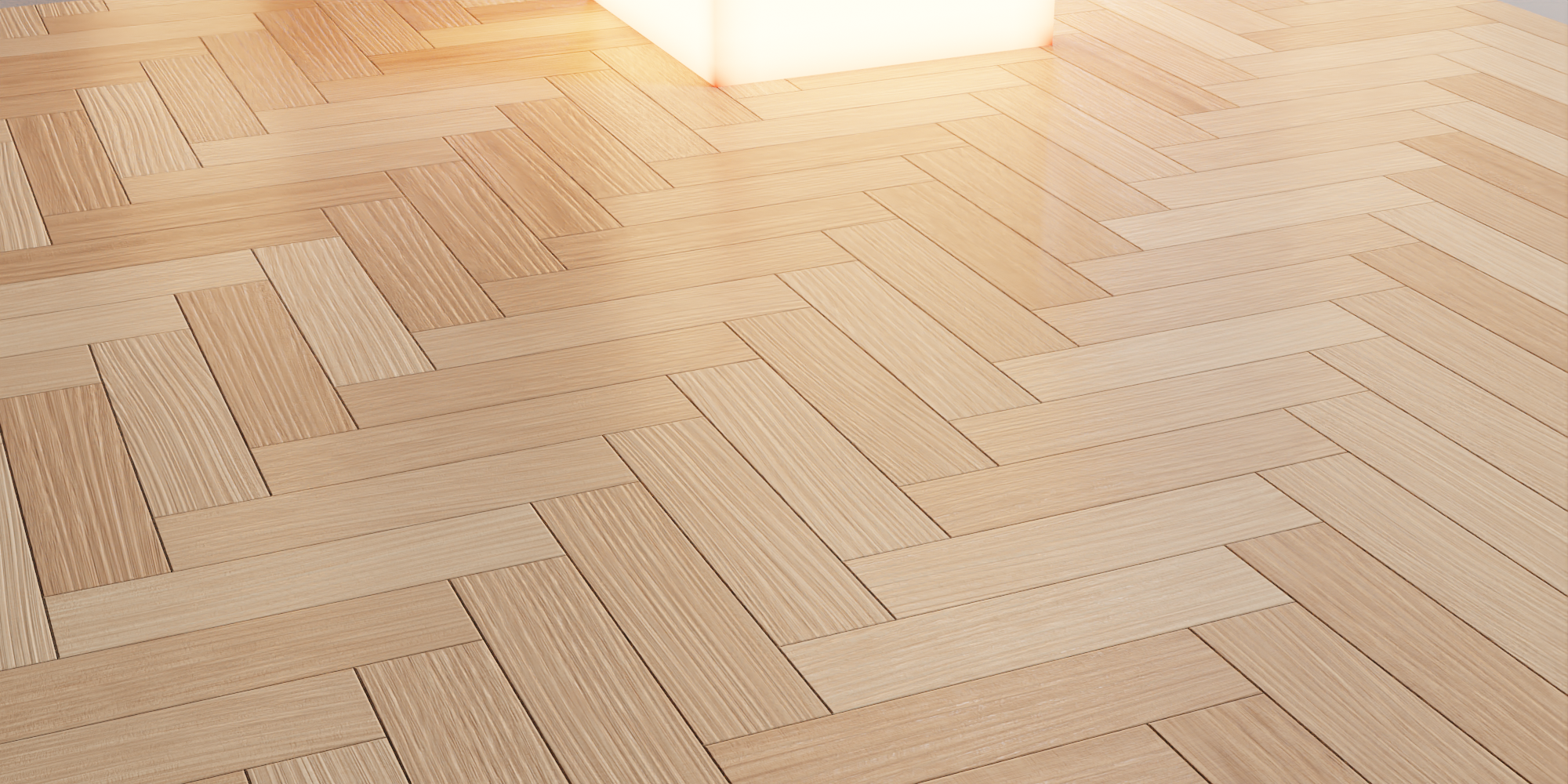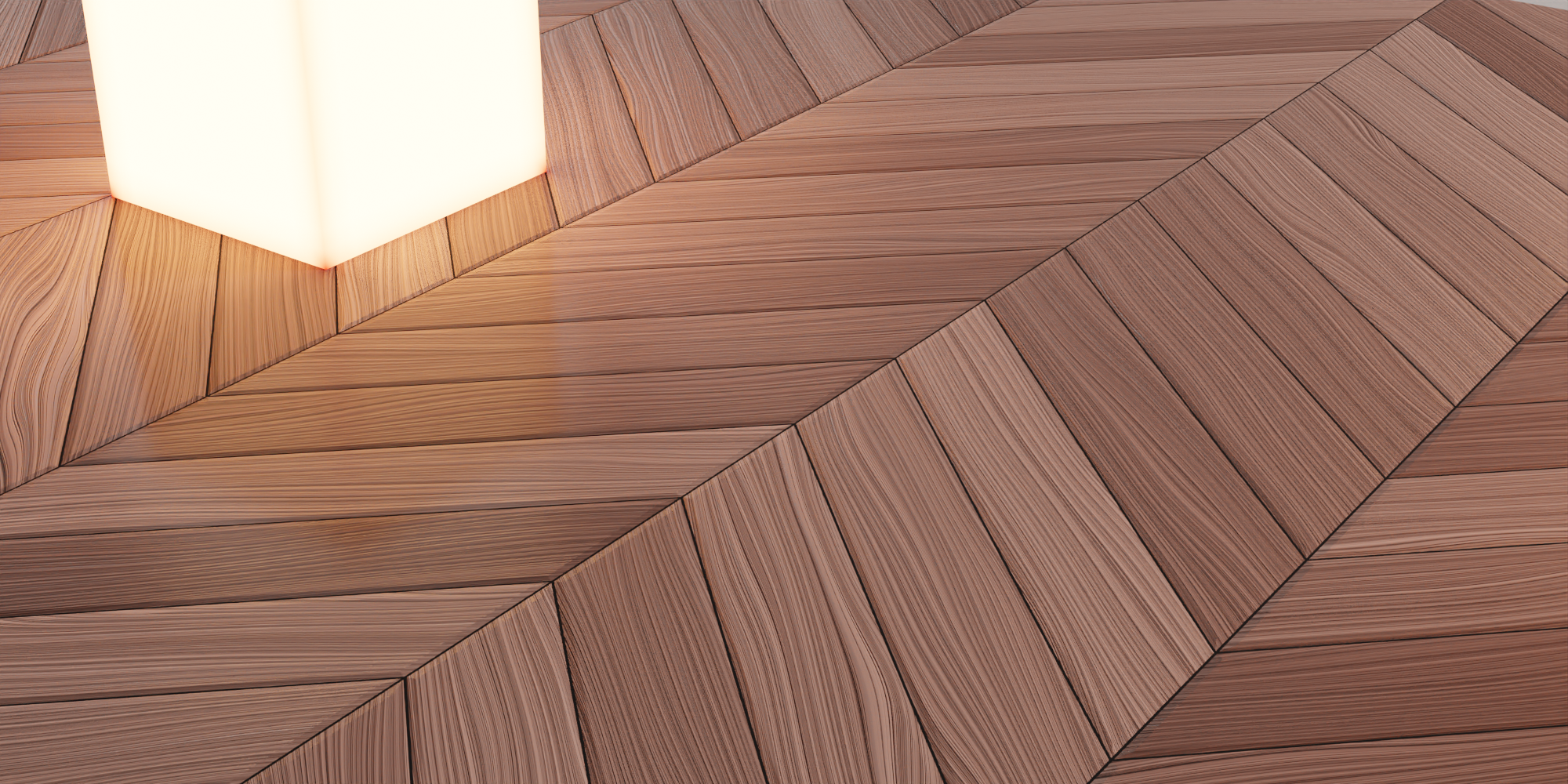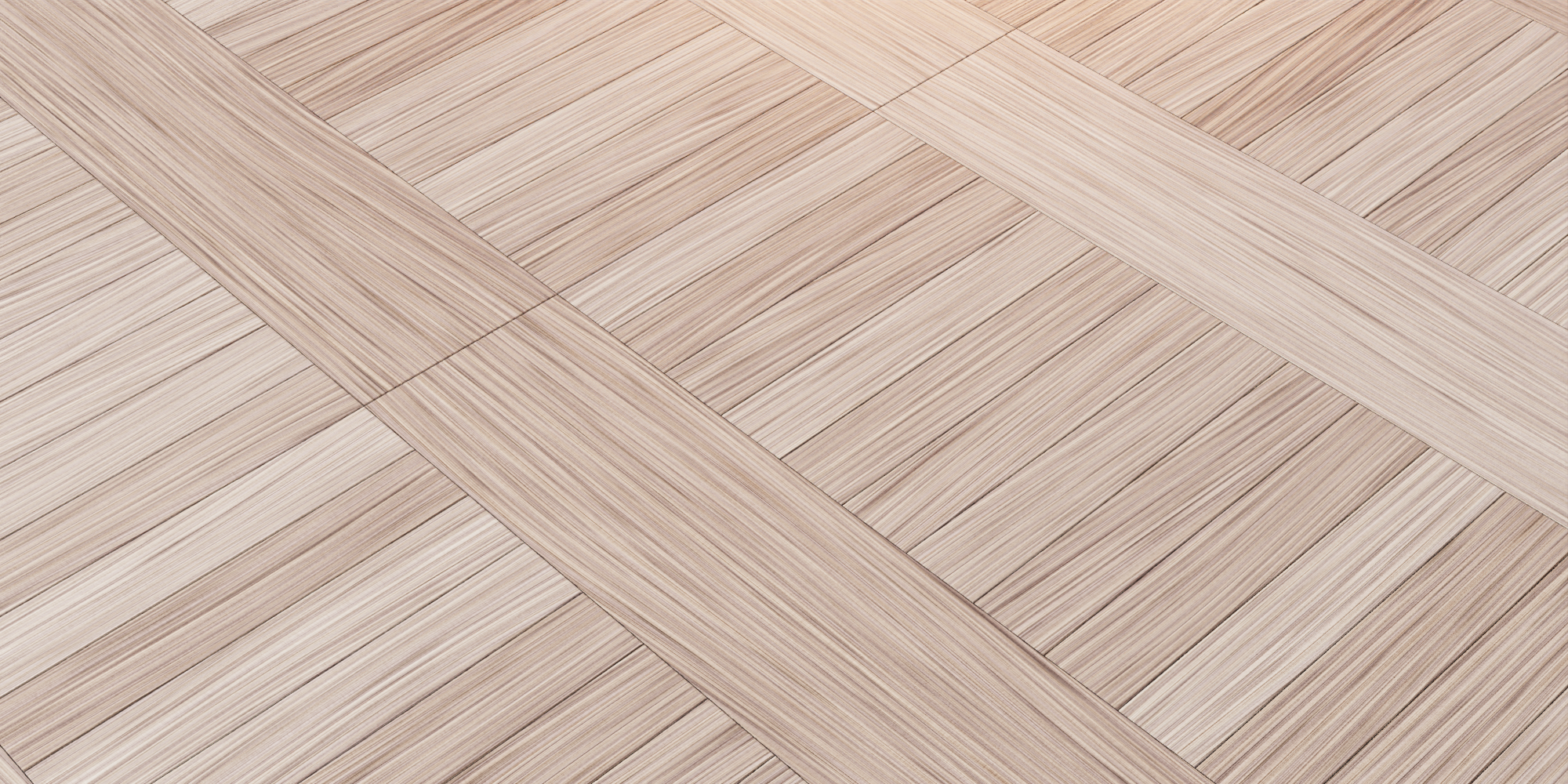3D Procedural Wood Material
Generate an infinite amount of different woods with just a few clicks. The texture is 3D so it will work with any shape and without any UV map, just put in a 3D texture coordinate such as "Object" or "Generated" and it will work just fine.
Along with the Wood generator, you will also get 3 types of glued wood, 6 floor patterns and plywood generator, all are procedurally generated.
The Generator is based on real wood with nesting bands to produce beautiful realistic wood texture.
Works with both Cycles and Eevee engines.
This product includes:
-
1 universal wood texture node
- 1 generic wood shader node
- 9 wood material presets
- 6 customizable floor patterns
- 3 customizable types of glued wood
- 1 Customizable plywood generator
Wood generator: Generate the wood pattern, This node group is the heart of this product.
- Vector: put in a texture coordinate.
- Scale: Overall size of the wood.
- Warp 1 - XY scale: the size of the large details in X and Y directions.
- Warp 1 - Z scale: The size of the large details in Z direction.
- Warp 1 strength: Controls how much the wood grains is warped at the large scale.
- Warp 2 scale: The size of the medium details in X and Y directions.
- Warp 2 strength: Controls how much the wood grains is warped at medium scale.
- Warp 3 scale: The size of the small details in X and Y directions.
- Warp 3 strength: Controls how much the wood grains is warped at small scale.
- Band random: The random size of individual wood grains, set to 0 for uniform grains.
- Band scale: The overall size of the wood grains.
- Color 1/Color 2: the color of the wood.
- Taint/Rot stretch: Stretch the taint and rot noise within the wood grains.
- Taint/Rot scale: Overall size of the taint and rot noise.
- Rot spread 1/Rot spread 2: Controls the spread of the rot within the wood grains.
- Rot strength: Blend between no rot and maximum rot.
- Rot color: The color of the rot noise.
- Taint strength: Adds more color variations for the wood.
- Fiber scale: Wood is made of cellulose fibers, this value control the size of the fibers.
- Fiber strength: Controls the visibility of the fibers.
- Saw crease scale: Wood tends to be cut using a saw of some kind, the saw blade would leave marks on the wood. This parameters control the size of the saw marks.
- Saw crease strength: Control the depth of the saw marks.
Wood shader: Combine the various textures of the Wood Generator to make a realistic wood material.
- Base Color: Put in the Base Color output of the Wood Generator.
- Bands: Put in the Bands output of the Wood Generator.
- Saw creases: Put in the Saw Creases output of the Wood Generator.
- Fiber: Put in the Fiber output of the Wood Generator.
- Height: Put in the Height output of the Wood Generator.
- Fresnel: The IOR of the wood surface.
- Max/Min spec: Controls the specular of the wood surface.
- Max/Min rough: Controls the roughness of the wood surface.
- Height scale: Increase or decrease the bumps of the wood.
- Clear coat: Adds a clear coating for the wood.
- Clear coat IOR: the IOR of the clear coat layer.
- Clear coat roughness: the roughness of the clear coat layer.
Wood tiles: Combine the data from the wood flooring nodes and the textures of the Wood Generator to produce realistic flooring shader.
- Random color: Expect the output of the Floor pattern nodes.
- Base color: Expect the output of the Wood Generator node.
- Mortar color: Set the color of the mortar between the wood.
- Bands: Expect the output of the Wood Generator node.
- Saw creases: Expect the output of the Wood Generator node.
- Fiber: Expect the output of the Wood Generator node.
- Height: Expect the output of the Wood Generator node.
- Plank height: Expect the output of the Floor pattern nodes.
- Plank Z scale: scale the height of the plank.
- Additional height: Add more height to the plank.
- Additional Z scale: Scale the additional height.
- Fresnel: The IOR of the wood surface.
- Max/Min spec: Controls the specular of the wood surface.
- Max/Min rough: Controls the roughness of the wood surface.
- Height scale: Increase or decrease the bumps of the wood.
- Clear coat: Adds a clear coating for the wood.
- Clear coat IOR: the IOR of the clear coat layer.
- Clear coat roughness: the roughness of the clear coat layer.
Floor pattern 1: Standard flooring pattern, alternating planks.
- Vector: Texture coordinate input, you can use Object texture coordinate as well as UV.
- Scale: Set the size of the floor pattern.
- Width/Height: Set the size of the wood planks.
- Gab: The thickness of the gab between the planks.
- Bevel: Bevel the edges of the planks.
- Shift: Move the wood planks horizontally.
- Random seed: Change the random color variation of the planks.
Floor pattern 2: Mirroring diagonal wood planks.
- Vector: Texture coordinate input, you can use Object texture coordinate as well as UV.
- Scale: Set the size of the floor pattern.
- Column width: Set the width of the wood columns.
- Gab: The thickness of the gab between the planks.
- Bevel: Bevel the edges of the planks.
- Plank width: The width of the diagonal wood planks.
- Angle: Rotate the planks within the columns.
- Random seed: Change the random color variation of the planks.
Floor pattern 3: Wood planks in ladder pattern.
- Vector: Texture coordinate input, you can use Object texture coordinate as well as UV.
- Scale: Set the size of the floor pattern.
- Size: Set the length of the wood planks.
- Gab: The thickness of the gab between the planks.
- Bevel: Bevel the edges of the planks.
- Random seed: Change the random color variation of the planks.
Floor pattern 4: Wood plank in H pattern.
- Vector: Texture coordinate input, you can use Object texture coordinate as well as UV.
- Scale: Set the size of the floor pattern.
- H1/W1: The size of the vertical planks.
- H2/W2: The size of the horizontal planks.
- Gab: The thickness of the gab between the planks.
- Bevel: Bevel the edges of the planks.
-
Random seed: Change the random color variation of the planks.
Floor pattern 5: Mirroring tiles of diagonal wood planks.
- Vector: Texture coordinate input, you can use Object texture coordinate as well as UV.
- Tile width/Tile height: Set the size of the mirroring tiles.
- Plank width: the width of the diagonal planks within the tiles.
- Angle: Rotate the planks within the tiles.
- Gab: The thickness of the gab between the planks.
- Bevel: Bevel the edges of the planks.
-
Random seed: Change the random color variation of the planks.
Floor pattern 6: Hexagonal wood floor pattern.
- Vector: Texture coordinate input, you can use Object texture coordinate as well as UV.
- Scale: Set the size of the floor pattern.
- Hex size: Set the size of the hexagons of the pattern.
- Gab: The thickness of the gab between the planks.
- Bevel: Bevel the edges of the planks.
- Random seed: Change the random color variation of the planks.
Glued wood 1: Glue together random blocks of wood.
- Vector: Texture coordinate input, you can use Object texture coordinate as well as UV.
- Scale: Set the size of the wood pieces.
- X/Y/Z seed: Change the randomness in the X/Y/Z direction.
- X/Y offset: Change the position of the wood pieces in the X/Y direction.
- Jigsaw: The amount of jigsaws that bind the wood pieces.
- Jigsaw height: The height of the jigsaws.
- Random seed: Change the random color variation of wood pieces.
Glued wood 2: Glue together wood pieces in hexagonal shape.
- Vector: Texture coordinate input, you can use Object texture coordinate as well as UV.
- Scale: Set the size of the wood pieces.
- Random seed: Change the random color variation of wood pieces.
Glued wood 3: Glue together wood pieces of varying shapes.
- Vector: Texture coordinate input, you can use Object texture coordinate as well as UV.
- Scale: Set the size of the wood pieces.
-
Random seed: Change the random color variation of wood pieces.
Plywood: Transform the texture coordinate to generate the plywood texture.
- Degree: Mimic how the sheets of plywood were peeled around the tree trunk. This parameter set the total arc that was peeled from the trunk.
- Radius offset: The distance from the center of the tree trunk, at which the sheets were peeled.
- Stretch: stretch the wood along the direction of the wood grain.
- Layers: The number of sheets that made up the plywood plane.
- Random seed: The variations between the sheets.
